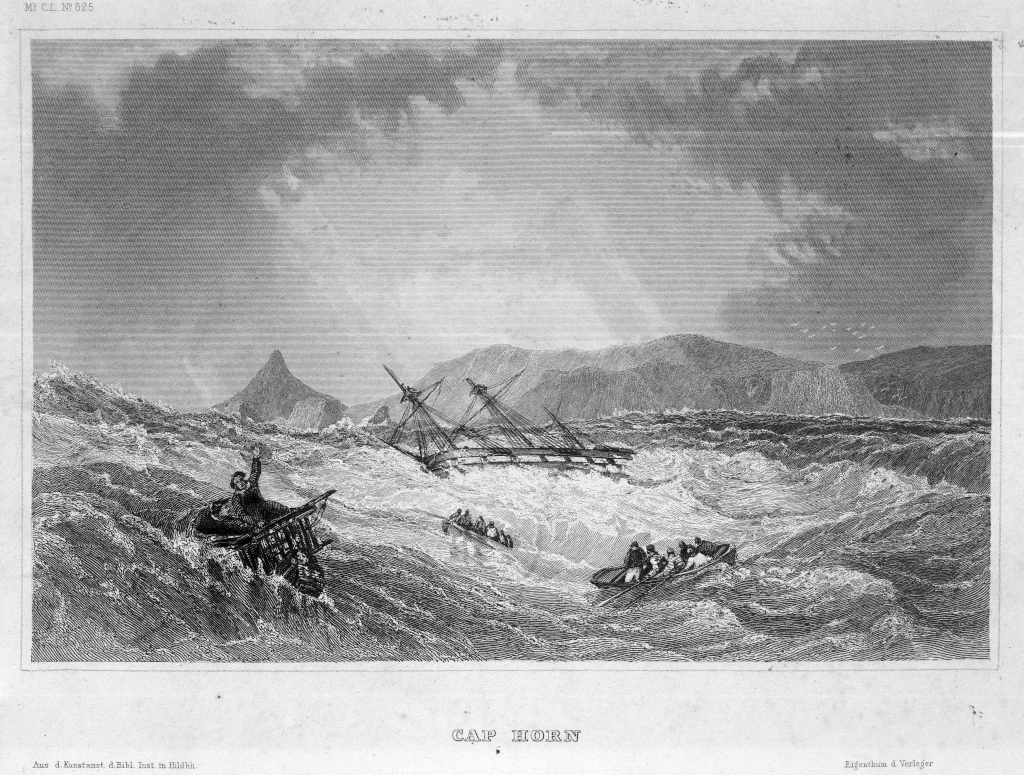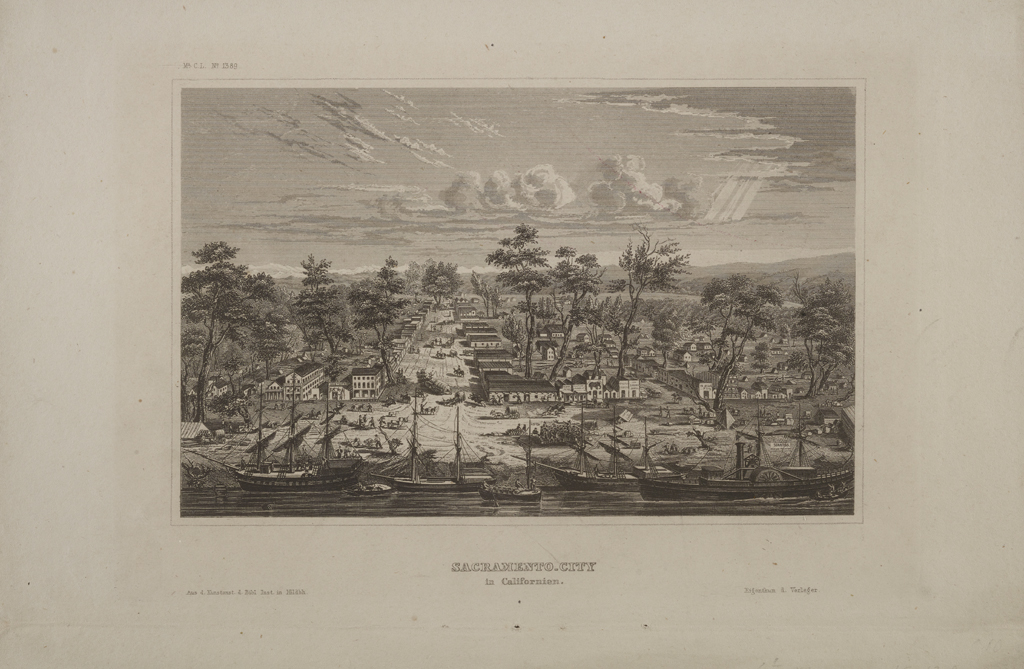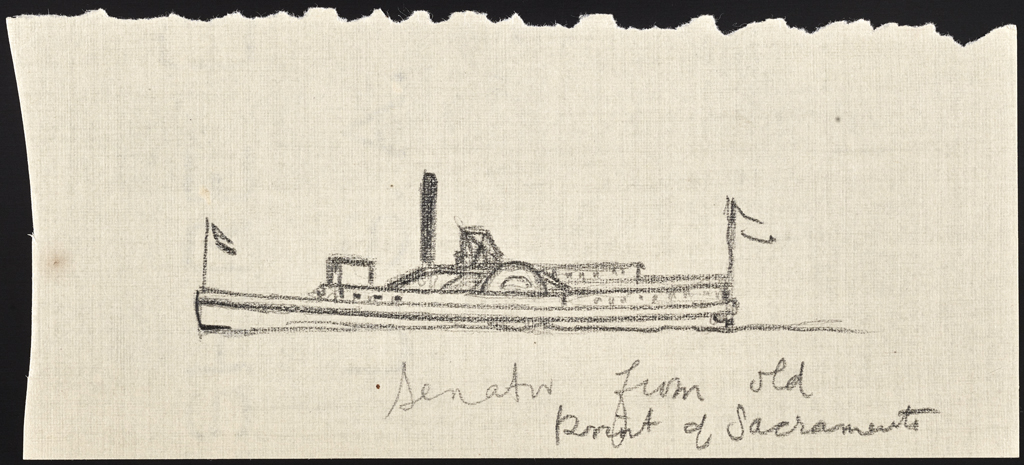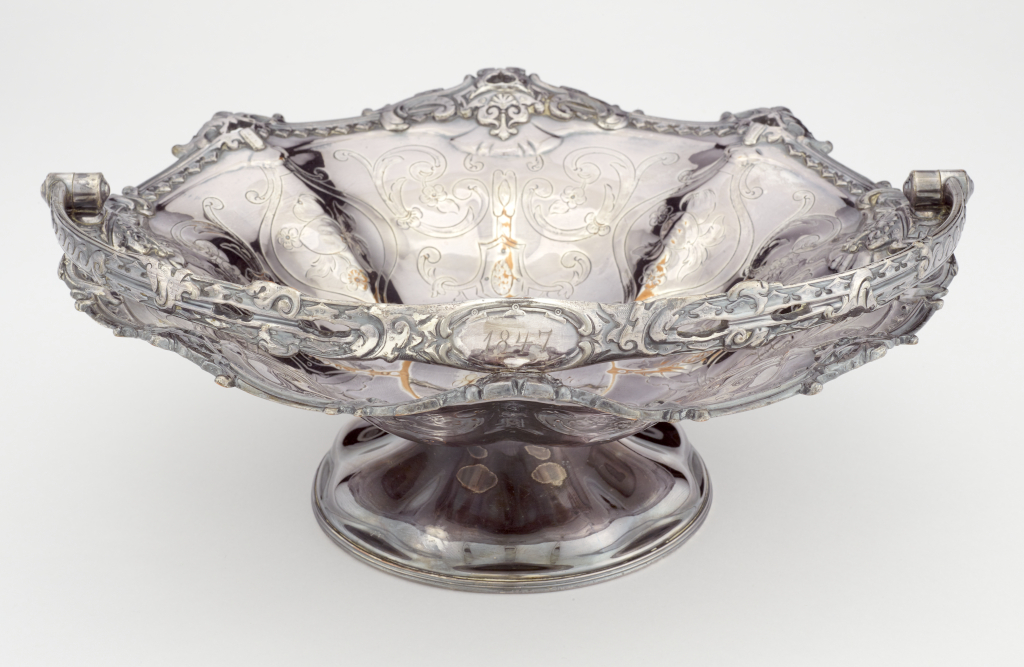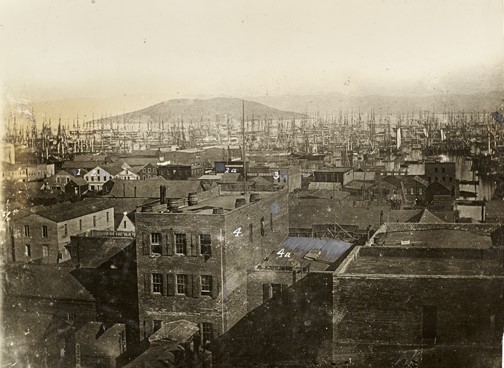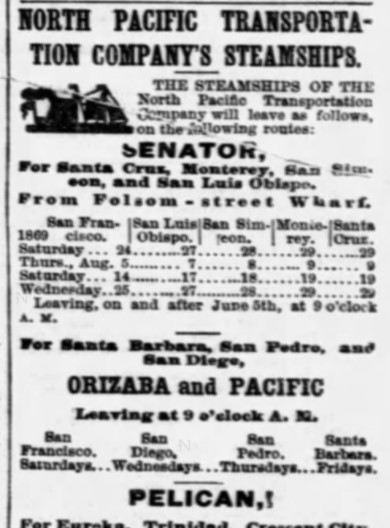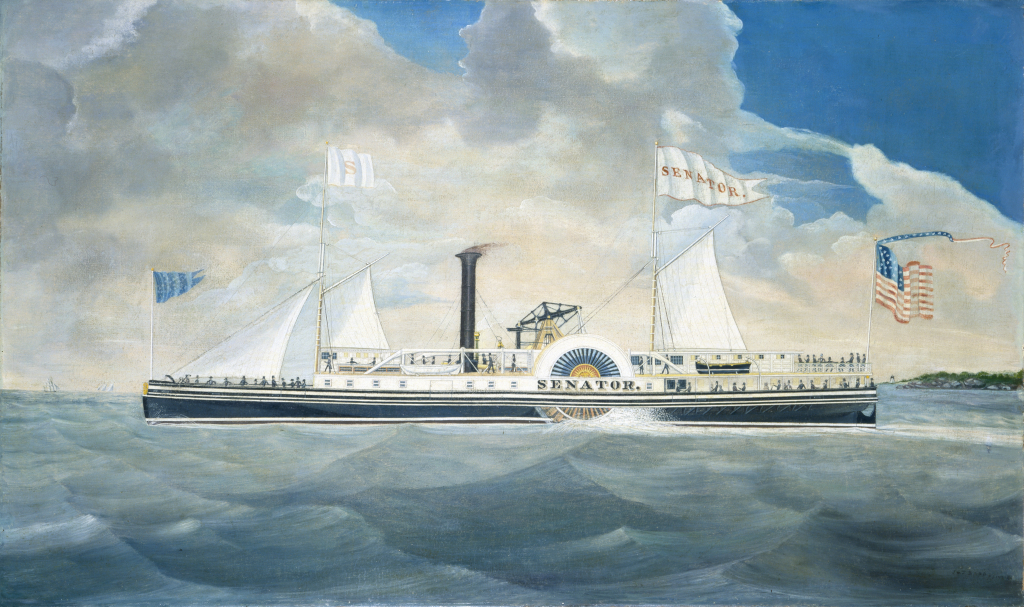The Mariners’ Museum and Park has thousands of prints in our collection, and one of my recent projects has been to catalog the prints and engravings from a German book titled Meyer’s Universum, oder Abbildung und Beschreibung des Sehenswerthesten und Merkwürdigsten der Natur und Kunst auf der ganzen Erde, or in English Meyer’s Universe, or Illustration and Description of the Most Remarkable and Strangest Things in Nature and Art all over the World. These illustrated travel books from the 1800s had fabulous names but for short, we’ll call it Meyer’s Universum.
There are only 29 of those prints in the collection so this should be pretty quick. I start by finding the book where the prints are published, verifying the edition (and therefore the year), then describing and researching everything in the image: buildings, bridges, statues, rivers, if I can identify it I will provide the history. We already had the name of the book, how hard can this be?
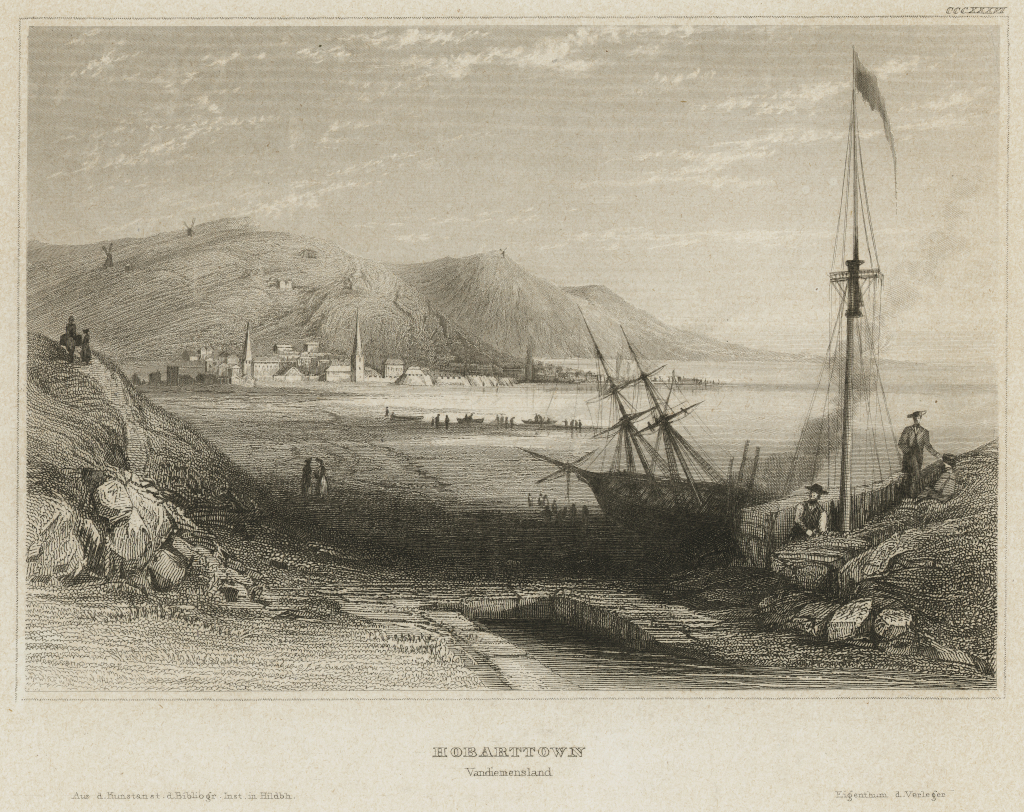
I quickly discovered that Joseph Meyer and his son Herrmann J. Meyer were German publishers who produced 21 volumes of Meyer’s Universum between 1833 and 1860, in six languages, and then republished the books between 1858 and 1863. Herrmann even came to the United States to establish a branch of the company, Bibliographisches Institut, and published several books, including reprints of Meyer’s Universum in German and English as well as a two volume book titled The United States Illustrated.
Not only did they print, print, and reprint, the Meyer men threw in a twist! Remember Jeanne’s blog about how people in the 1600s plagiarized each other without a second thought? It turns out the people of the 1800s did the same. Both Joseph and Herrmann reproduced previously published images from other books, from posters, and even from a daguerreotype, then neglected, or we’ll be kind and say they forgot, to credit the original work.
(For more information about their antics, check out Dr. Kirsten Belgum’s article, “Visualizing the World in Meyer’s Universum” from Colloquia Germanica , Vol. 49, No. 2/3, Themenheft: Periodical Literature in the Nineteenth Century (2016), pp. 235-258)
One image that caught my attention was of Sacramento, California because there is a steamship in the bottom corner with a name on a banner hung between the masts: Senator. Oh, something fun to research! The print appeared in several editions of the books, particularly in Meyer’s Universum volume 15, on page 109 from ca 1852 and also in The United States Illustrated, on page 150 of volume 2 published in 1853. But the marks on our print do not match either of those, so it appeared in at least a third location that I have yet to put my finger on.
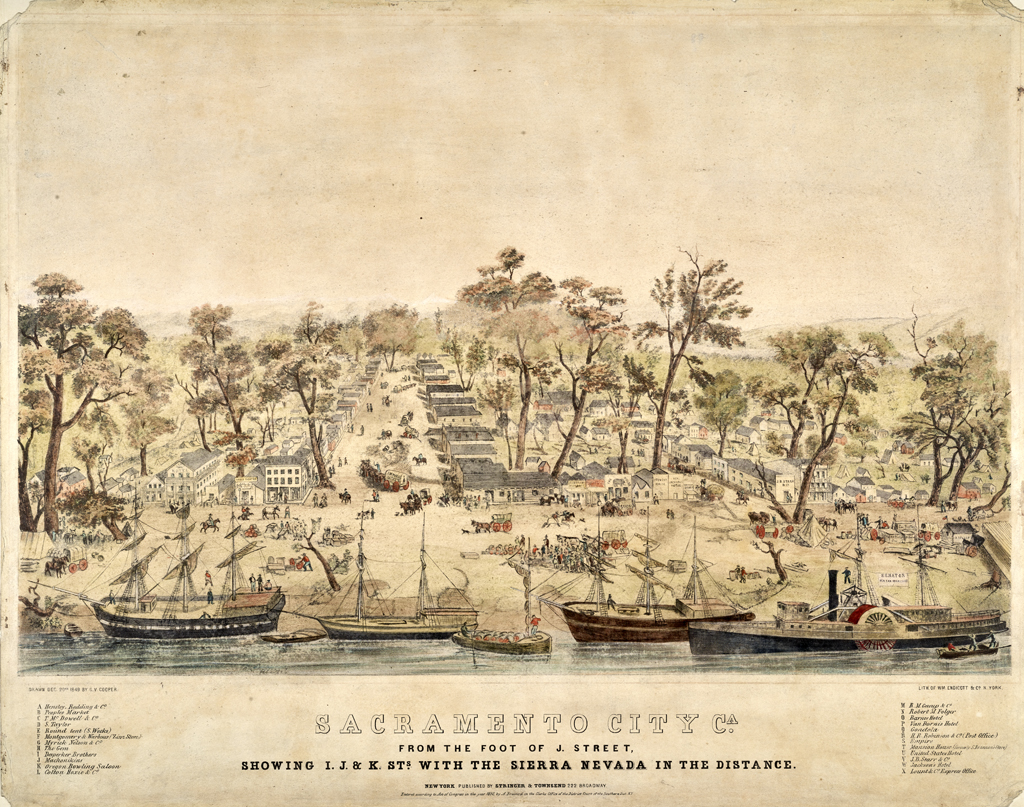
This print, like so many others, is not the original artwork of the Meyer men or their employees. I found the original print on the Library of Congress website, with an amazing ability to zoom in super close and read the markings on all of the buildings and that banner on Senator. As it turns out, our collection is so amazing that we ALSO have the original print so I could see it in person! I get very excited about the little things.
George Victor Cooper drew the original artwork on December 20, 1849, and then Charles Parsons engraved it, William Endicott & Company of New York produced a lithograph of it in 1850, and Stringer & Townsend published the image. That’s two years earlier than the Meyer publications I found.
The print has amazing detail on it! I absolutely love a good map with details, so much so that my Dad used to call me Map Girl as a kid because there isn’t much better for a trip than a handy dandy laminated map in case it rains. This print shows a pitched tent selling hotcakes and coffee, a covered wagon labeled Old Kentucky (as someone from the Bluegrass State I assume they are selling bourbon but it may be burgoo, who knows?), the Eagle Theatre, Bailey & Morrison Groceries and Provisions, the Oregon Bowling Saloon, and several hotels.
While all of the buildings have fascinating histories, the steamship Senator opened a world of great history. Built between 1847 and 1848 in New York, the ship travelled along the coast of Maine for a short time until John Sutter discovered gold at his mill in California and the entire world took notice. Senator became one of the first steamships to arrive in California from New York, arriving in October 1849.
This was a very profitable time to be in California, not exactly because you could find gold but because you could earn money from the prospectors who were looking for the gold. That’s where Senator came into the story. Senator was the first deep water steamship to arrive in Sacramento on November 8, 1849. As a deep water ship she was unable to go farther up the Sacramento River because of the depth, but that ended up not mattering a single bit. She traveled between San Francisco and Sacramento, raking in $60,000 a month in her first year, which would be over $2 million in 2020.
This was a dangerous time to be on a steamship. Boilers exploded, ships caught on snags in the water, ships collided with each other, and there were numerous other disasters. One problem that was particular to California was that the entire crew might abandon ship to go find gold. Over time abandoned ships filled the Yerba Buena Bay which became a floating forest of masts. People began to repurpose the ships as floating hotels or businesses, but often they sank the ships, filled them in, and built out overtop of them.
I suppose the crews of Senator realized the money they could make on the ship rather than in the gold mines, so the ship continued carrying people and goods toward their dreams. Over time more ships arrived in California and the wealth began to spread out. In 1869 Senator was rebuilt as a coastal steamship and spent more than a decade traveling up and down the California coast. By 1882 Senator was worn out so her engines were removed and she became a coal hulk in New Zealand.
The Senator and other ships like her were a big part of the Gold Rush, providing the transportation that brought people from around the world to the west coast in search of fortune. Senator’s importance on the water is evident because George Victor Cooper took time to include the name of the ship in his image along with 47 other companies and buildings. When Herrmann Meyer hired someone to engrave Cooper’s drawing for his own book, the only name from Cooper’s artwork to appear on Meyer’s print was that of Senator.
